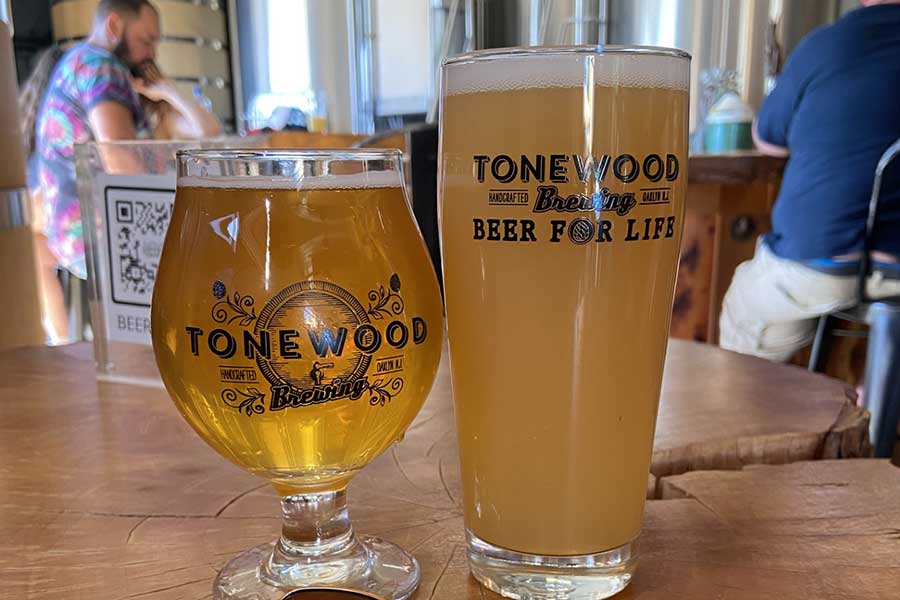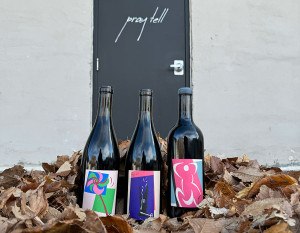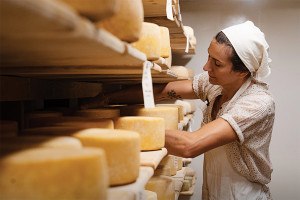Ask a Bartender: Where to Find Philly’s Best Craft Lagers
The IPA craze is slowing down and lagers are taking their rightful place in the pantheon of craft beers.

Tonewood beer at their Oaklyn brewery. / Photograph by Kae Lani Palmisano
Mike Landers is a Philly-based bartender. You may recognize him from Martha, or maybe Emmanuelle, The Yachtsman, Bloomsday, Pennsylvania Libations in RTM, or his current gig at Forest & Main Brewing Company in Ambler. If you’re ever in doubt of what to drink, Landers has you covered with tips on what to try.
Is the IPA dead? No, but it’s no longer the only option for serious beer drinkers. Brewers are making space for dads at the bar with a revival of well-made lager styles. Originally brewed in Germany and made so popular it spread across the European continent by Czech pilsner, the lager has long been an underdog in the craft scene. It takes time and precision to make them well, but when made properly, lagers maintain a delicate balance between malt, hops and yeast.
As European immigrants settled in the United States in the late 19th and early 20th centuries, they brought their beer traditions with them. The first lager brewed in America was in Northern Liberties in 1840 by John Wagner who brought lager yeast from his home in Bavaria. In fact, this first American lager predates the pilsner by two years. As a city with a large German population, the stateside-brewed lager dominated the market, and by the 1850s around 30 Philadelphia breweries were making lager beers.
The brewers were trained in the German tradition and often used yeast strains from their home country, but the malts required to make pale lager weren’t available in the United States. Many brewers had to adjust their recipes with alternatives like corn and rice to make light-bodied golden lagers.
Then, Prohibition wiped out most of America’s breweries, including the ones who focused on lagers. We entered an era of conglomeration — mass-produced beers made by a small few. Cost became more of a concern than flavor, so more brewers used cheaper alternatives to hops. The result: simplified American macro lagers that were a bland echo of the pilsners they evolved from.
In the 1990s and 2000s, microbreweries sprang up as a direct rejection of these insipid big-brand lagers. Traditional beer styles were revisited, but lagers were still less common than ales. And for good reason: Lagers take longer to make and they take up space in the brewery. For smaller producers, dedicating space and time to a beer that people expected to be cheap and flavorless (thanks to those big-name lagers) wasn’t a realistic option. Some breweries put out an Oktoberfest beer but that was the extent of any seasonal lager release.
For smaller breweries who didn’t have the time or capacity to invest in the lager, fast and hoppy IPAs were easier to pull off. They could be made quickly but still show off the use of hops, so rarely seen in American beer for decades.
Hops were king, and breweries scrambled to see who could squeeze more IBUs (International Bitterness Units) into a beer. New hop varieties were fetishized. American IPA developed a far more bitter, intense flavor than its original English counterpart. In the 2010s, New England brewers turned this idea on its head by making “hazy IPAs” with huge hop flavor but very low bitterness.
The craft beer scene has evolved significantly over the past 25 years. I think hoppy dominance has finally reached its peak. The hazy IPA’s quick spread and ubiquitous appeal has made it the most mainstream IPA substyle. And now that everyone makes them, beer nerds aren’t lining up around the block to get the freshest new hoppy beer anymore.
There will be some backlash with increased West Coast or traditionally filtered IPAs than we have seen in recent years, but they won’t be more popular than hazy juice bombs. IPAs will continue to be well represented on taplists and portfolios, but the days of a brewery’s offerings being 80 percent IPA are over.
As beer lovers’ tastes are expanding beyond the IPA, the idea of craft lager is gaining traction around the country. In our region, one brewery that puts lagers on the same pedestal as IPAs is Human Robot where roughly half their offerings are lager styles. They’ve even installed Czech Lukr faucets — the preferred way to serve lagers because it allows the bartender greater control over the flow and proportion of beer and foam.
Many breweries now offer multiple lagers in cans and on draft, and they rotate with a frequency once reserved for IPAs. Below are some of my favorite lagers. Prost!
Human Robot, Kensington, Schuylkill Banks and Jenkintown
Polotmavy, a Czech half-dark lager, is brewed regularly and is my favorite.
Forest & Main, Ambler
You can count on Forest & Main to always have their House Lager available in cans and on draft.
Troubles End Brewing, Collegeville
Kith N Kin is a golden spelt lager available by draft only.
Mainstay Independent Brewing, Northern Liberties
Poplar Pils is bright and light beer, regularly available in cans and on draft at Craft Hall.
Second District Brewing, South Philly
With a lightly malted taste, the Petite Pils is one you’ll one to stop by Second District to try. They’re a small brewery, and it’s only available on tap.
Attic Brewing Co., Germantown
Don’t let its light color fool you. Unresolved is a strong Maibock, and a silver medal winner at the Great American Beer Festival.
Love City Brewing, Callowhill
You’ve likely seen the Love City Lager around town. This crisp, light, easy drinker gets pretty wide distribution in cans and on draft.
Von C Brewing Co., Norristown
Get a taste of Philly beer history with the OG Pils Legendary Philly Lager which is made from the original Schmidt’s recipe.
Triple Bottom Brewing, Spring Garden
Glow is a smoked helles lager that’s light but still has a kiss of smoke.
Dock Street Brewery, South Philly and Fishtown
Philadelphia’s first microbrewery has been brewing the Bohemian Pilsner since 1985.
Bonesaw Brewing, Glassboro, New Jersey
Pummel is a classic German style Pilsner.
Source Brewing, Fishtown and Coltsneck, New Jersey
It’s not often you come by a rotbier, but when you do, you have to try it. Source Brewing’s Coat of Arms is a Franconian red lager with a flavor as robust as its history, which stretches back to the Middle Ages.
Tonewood Brewing, Oaklyn and Barrington, New Jersey
Made with German malt and Noble hops, Tonewood’s Lumberyard is a helles lager that’s regularly available on draft and in cans.


